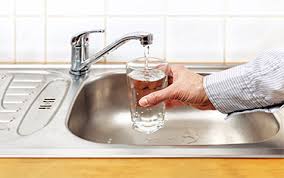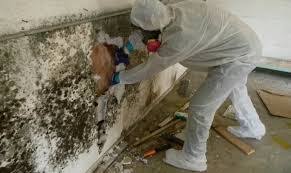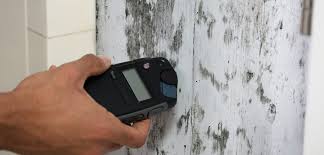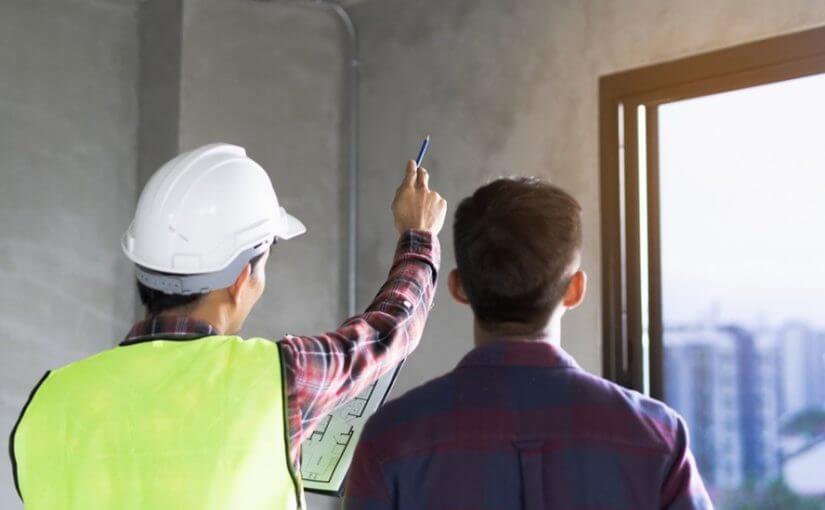Making Sure Your Well Water Is Safe To Drink With Water Testing
Home Inspectors
Both tests are reported in a clear and concise format. Turnaround time on these two test packages may take 10-15 business days to complete once the water sample is received at the laboratory. In order to meet the time constraints presented in home transactions, has also developed a series of seven products with a 2-3 day turnaround time. The Quick Seven Series include all the potability items typically requested for a home transaction. Test results are emailed within 2-3 business days of sample receipt at the laboratory. This quick series is extremely helpful for Home Inspectors who are providing a full home inspection for the potential buyer. This quick series not only provides you with a quick glance at the homes water quality, but additionally can offer you insight as to the operability of existing treatment systems within the residence.
When health departments require testing, they usually have a specific list of parameters that should be included in the analysis. When results are to go to the health department, we recommend compliance testing. Compliance testing is quoted on a case by case basis due to differing requirements. If compliance testing is required, please provide a list of the contaminants required and the state in which the work is to be completed. We will review the necessary certification and issue an official quote within two business days which will include pricing, turn-around-time and any other information pertinent to performing the analysis.
Quality Service
Not only do we offer you the highest quality testing packages and analysis, we also offer you excellent customer service. Our technical representatives hold degrees in Biology, Environmental Geology, General Sciences and Business. The technical service representatives review current regulations and stay in contact with regulators in order to offer informed recommendations to customers concerning their testing needs.
After consulting with one of our representatives, customers are shipped test kits that come with simple instructions to make sample collection and shipment back to our laboratories as easy as possible. Once the sample reaches our laboratory, the highly skilled and trained laboratory technicians are responsible for the processing and analysis of the sample. The laboratory staff and technical representatives are in constant communication so customers are notified immediately of problems or concerns as samples are processed.
Once the results have been sent to the client, please be assured our service does not stop there. Representatives are always available to answer questions regarding the results or to assist in additional testing that may need to be performed

Water Quality Testing
The water you drink may LOOK clean, but do you know what’s in it?
Your water might originate from a clean source, but in some cases that water has to travel through many miles of pipes before reaching your home. Some of these pipes may be very old, corroded and leaky. Ground water can enter these pipes adding any number of contaminants
In certain circumstances, the lead from that solder can get into your water supply. If you are on a municipal water supply, take a look at your last water bill. In several communities the following warning is printed on the water bill
Which Water Test is Right for You?
Is your water source within 10 miles of any of the following: Dry cleaning business, metal processing companies, mining operations, industries, farming or landfills? Is your water source within 1 mile of any of the following? Gas stations, cemeteries more than 100 years old, salt water shoreline, highway salt storage.
Inorganics: Lead, calcium, copper, iron, magnesium, manganese, potassium, sodium, alkalinity, chloride, chlorine, color, conductivity, hardness, nitrate, odor, pH, sediment, total dissolved solids, sulfate, turbidity, lead, arsenic, ammonia, nitrate.
A powerful test for surface water and well sources. This comprehensive check tests for 60 volatile organic compounds including, MTBE as well as all the items in the standard scan.
Request a Water Quality Test Before Buying Your Next Home
Being an educated homeowner is more important than ever, especially when it comes to what we eat and drink. Exercise, healthy eating, and health education are hot topics in advertising, business, and the news. Headlines about polluted or toxic water invading our water supplies have many Americans questioning the true quality and safety of the water they drink and use every day. This has sparked an increased demand in public and private water quality testing in and around Hanover PA.
“Free” vs. professional water testing
There are some companies, like water delivery or purification businesses, who offer “free” water testing in order to get you to use their services; however, that is NOT the same as having a home water inspection by a professional. It is recommended that you hire a home inspector who offers a wide variety of water quality tests and knows which one best suits your situation.
What kinds of water supplies should be tested?
Whether you live in the city, suburbs, or out in the country, both city and well water should be tested. Your specific area has its own risk level, and, if you have well water, you have different risk level depending upon bacteria, pesticides, and other contaminants.
Is water testing necessary in order to buy or sell a home?
If you have a privately-owned well or are buying a home with a private well, the EPA has no jurisdiction over your water supply. Therefore, it becomes the owner’s responsibility to assure their water is safe to drink and use. Some lenders such as the FHA and VA require water testing in order to secure financing of a new home.
What kinds of water tests do the FHA and VA require?
The FHA Series typically requires total coliform, ecoli, nitrate, nitrite, and lead tests. The VA Series typically requires total coliform, pH, total dissolved solids, hardness, nitrate, nitrite, and iron tests. Before ordering a water quality test, check with your lender to ensure all the right water tests are performed. Some lenders deviate from the aforementioned lists.

WATER QUALITY TESTING
Home water testing is important for existing homeowners as well as those considering purchasing a home. We use it daily to wash and cook with and the water we drink nourishes and sustains us
Why should I have my water tested?
If you are already a homeowner, it’s important to know the water you are drinking is safe for your family. If you are buying or selling a house it could be an important to part of the inspection process to test the water. Specifically, a mortgage associated with the purchase may have requirements to show acceptable drinking water.
Most common types of tests and what they test for:
Basic Water Test – Total Coliform, E. coli, Heterotrophic Plate Count, Nitrate and Nitrite.
Standard Water Test – Total Coliform, E. coli, Heterotrophic Plate Count, Nitrate, Nitrite, Arsenic, Lead, Sodium and Hardness.
Comprehensive Water Test – Total Coliform, E. coli, Heterotrophic Plate Count, Chloride, Nitrate, Nitrite, Fluoride, Sulfate, Antimony, Arsenic, Barium, Beryllium, Cadmium, Calcium, Copper, Chromium, Iron, Lead, Magnesium, Manganese, Mercury, Nickel, Potassium, Selenium, Silver, Sodium, Thallium, Zinc, Alkalinity, Conductivity, Hardness, pH, Total Dissolved Solids and Turbidity.
City Water Test – Total Coliform, E. coli, Fluoride, Copper, Lead.
EPA Well Water Test – Total Coliform, Nitrate, pH, Total Dissolved Solids.
FHA/VA Loan Well Water Test – Total Coliform, E. coli, Nitrate, Nitrite, and Lead.
Which water test do I need?
Ultimately this depends on your specific situation and why you need to test the water. If you are on a public water system you may want a City Water Test. Whereas, if you have a private well the EPA recommends testing for total coliform bacteria and nitrates every year.
What do I do if I find something that shouldn’t be in my water?
You may be able to resolve the situation on your own with a trip to the local hardware store or need the assistance of a professional water specialist if you need something more comprehensive installed.
Water Testing
Clean water is essential, and often something we take for granted. Water is one of the most overlooked items when purchasing a new home, however, could be one of the most important. All homes with wells should be tested for bacteria in the water, your mortgage may even require it. Beyond bacteria, consider testing for heavy metals and other contaminates.
Many believe there is no need to test water on a public system, however recent events have proven otherwise. Just because the water source is clean, if your home was built before 1980 there could be lead solder used in your plumbing and the supply line connecting the home to the public system. Consider testing your water for lead as a part of your home inspection.
can test for a number of items, please let us know what items are needed. Package prices below.
Basic $125
Coliform and Fecal E. coli Bacteria
FHA Water Test $225
Coliform and Fecal E. coli Bacteria, Iron, Lead, pH, Turbidity, Nitrate, Nitrite, Total Nitrate/Nitrite
Standard Scan $275
Coliform and Fecal E. coli Bacteria, Turbidity, Chlorine, Arsenic, Copper, Lead, Nitrate, Nitrite, Chloride, Iron, Manganese, pH, Odor, Sulfate, Potassium, Sodium, Calcium, Magnesium, Hardness, Conductivity, Ammonia, and Sediment
Comprehensive Scan $350
Coliform and Fecal E. coli Bacteria, Turbidity, Chlorine, Arsenic, Copper, Lead, Nitrate, Nitrite, Chloride, Iron, Manganese, pH, Odor, Sulfate, Potassium, Sodium, Calcium, Magnesium, Hardness, Conductivity, Ammonia, Sediment, Radon, and Volatile Organic Compounds (VOCs)
Having clean water is important, having enough of if it is also important. A well flow test will confirm that you have an ample supply of water on demand, and that your plumbing components can handle continued use at a consistent rate. We will measure the water, typically at three gallons a minute and confirm this is constant over the course of an hour.
If at the end of the test the well is not producing at the same rate we began this indicates an issue with the amount of water available or the capability of the well components. Knowing the depth of your well won’t tell you either of these things. We recommend a well flow test on every home purchased with a well




